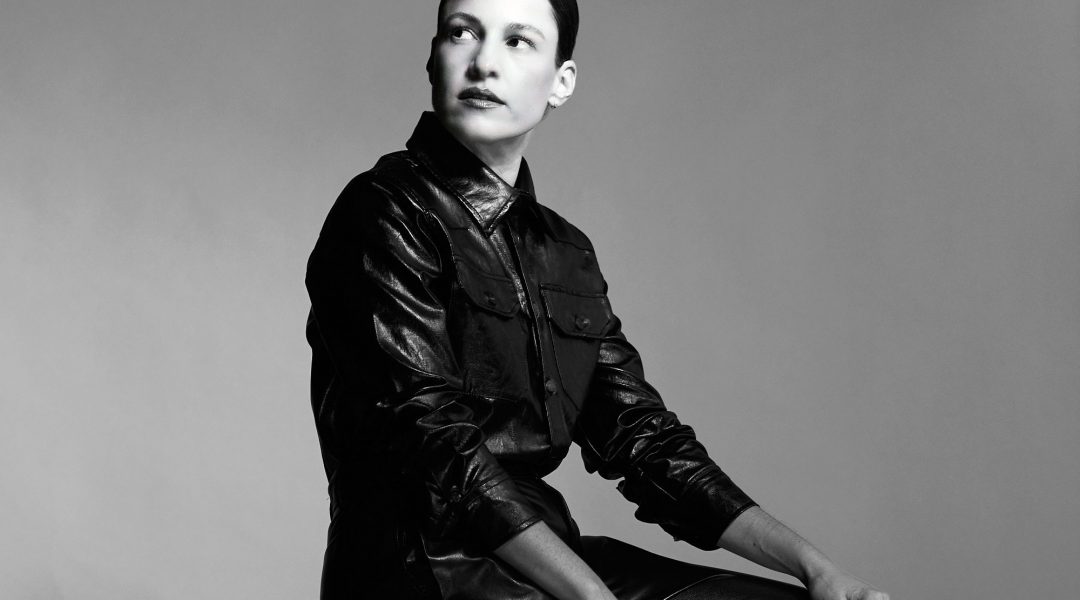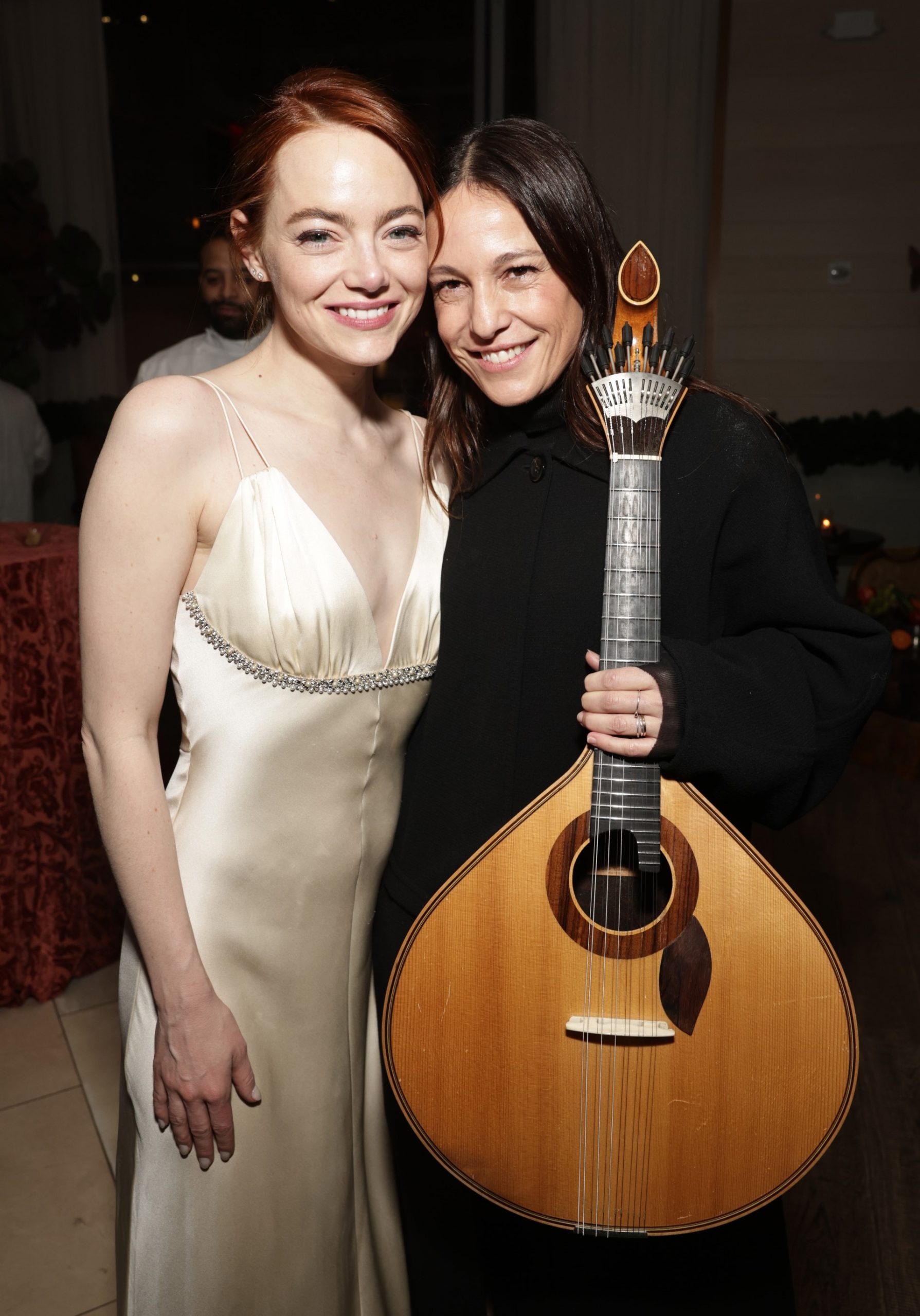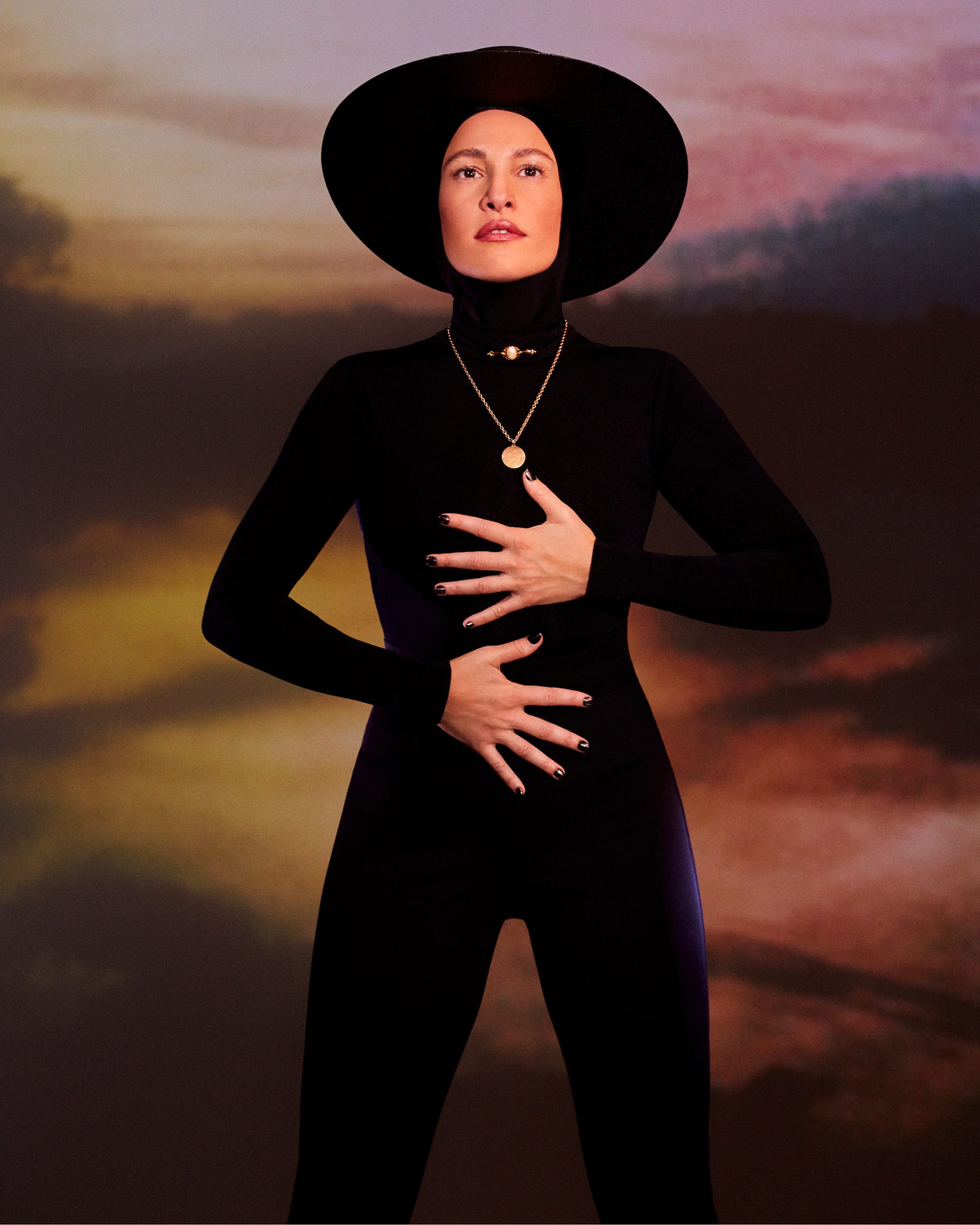The surprising story of how the Portuguese helped shape country music and how Poor Things Portuguese superstar singer Carminho uses pedal steel.
Portugal, the nearly thousand-year-old European country, facing the U.S. from the opposite side of the Atlantic, surprisingly played a critical role in shaping the sound of American country and Western music. To understand how, we first need to visit the 50th state, where Hawaiian music patriarch Joseph Kekuku invented the steel guitar. Kekuku left the islands in 1904 to tour the mainland, where his soothing tropical sounds, prominently featuring his steel guitar and slide, became wildly popular across the continent, throughout the difficult times of the early 1900s. Today, we all recognize the Hawaiian sound, but few realize how it impacted modern country music.
It was a long journey to Nashville. Before Kekuku invented the steel guitar, similar sounds were being made in Hawaii using six-string wooden guitars, using a special slack tuning method and the all-important steel slide. The guitars were laid flat and played horizontally. Alongside, the smaller four-string ukelele was chosen for accompaniment as the Hawaiian sound took shape in the late 1800s.
By the mid-1900s, Kekuku’s steel guitar had found eager acceptance by country-music pioneers and their audiences, the sound eventually evolving into the iconic ambience of dance halls, roadhouses, barbecue joints, and honky-tonks across the country. The modern pedal steel guitar is a refined version of the earlier instruments — with plenty of evolution over time.
The open-tuned Hawaiian lap steel got pedals with Gibson’s Electraharp mid 20th century and, having hit Nashville, continued to evolve and countrify. “[Over] the next two decades it continued to mutate as different players experimented with tuning and pedal combinations in Nashville garages and recording studios,” writes Jesse Jarnow in the 2020 NPR story “The Endless Potential of the Pedal Steel Guitar, an Odd Duck by Any Measure.” Hard to play — it requires both hands, both feet, and sometimes the knees on levers that bend the notes — it was adapted and mastered by consummate Music City session man Buddy Emmons, who is widely regarded as the foremost pedal steel player and innovator of his day.
But before going forward to pedal steel’s country music future, let’s go back to Hawaii. How did Hawaiians of the late 1800s come to know so well the wooden guitars of European origin in the first place? The answer began when King Kalākaua and the Hawaiian Planters’ Society started recruiting laborers to boost sugar production for valuable exports to the mainland. Workers from Portugal’s Hawaii-like Azores and Madeira islands were sought-after, as the Portuguese already had centuries of experience in sugar production, and their reputation as reliable workers was known to the islanders. Beyond that, the Portuguese had a seagoing legacy that made reaching the distant islands — following Portuguese discoverer Magellan’s long and treacherous route around the southern tip of South America — a manageable task.
Portuguese sailors began arriving in the 1870s, and by the early 1900s (still before the Panama Canal) Portuguese made up nearly 10 percent of the Hawaiian population. Of course, they brought some of their Old World culture with them, including their musical instruments, the Portuguese cavaquinho translating directly into the ukelele and larger guitars becoming the slide instruments.
Descendants of these Portuguese immigrants include a number of celebrated figures, including ukulele master Don Ho and steel guitar virtuoso Freddie Tavares. Tavares played steel guitar for many early country legends and even gave us the sirenlike steel slide lead into and swooping end of Warner Brothers’ Merrie Melodies & Looney Tunes cartoon adventures. As an encore, he went on to help Leo Fender develop the Stratocaster, a guitar that has made its own inroads into country music today.
While it became a classic staple of the mid-century Nashville sound and probably remains most associated with that era, the truth is, pedal steel never really went away. There might be fewer players these days and dwindling numbers of the actual instrument, but, when singers and studios go looking for that lonesome, aching, swooping, evocative whine, it’s pedal steel that comes to mind. And that has led to something of a renaissance of the instrument and the return of its sweet, twangy glissando after its sabbatical from the earlier Buck Owens, Hank Williams, Patsy Cline heyday.
And that’s the case on both sides of the Atlantic. Portuguese singing superstar Carminho — you might have heard of her from her recent lauded performance singing her song “O Quarto” to Emma Stone’s character, Bella, in the movie Poor Things — is a fan of the pedal steel. Carminho comes from a background in one of Portugal’s most traditional styles of music: fado. The sound of fado is indeed nothing like country music, but the stories the songs tell — of hardship, lost love, yearning for better times — are not so different.
Far from Nashville, in Portugal’s capital city of Lisbon, we caught up with Carminho for a captivating conversation about her music, pedal steel, her appearance in Poor Things, and a fateful trip to Norman’s Rare Guitars.
C&I: Congratulations on your success, which continues to grow worldwide, including a Latin Grammy nomination for Best Portuguese Language Roots Album for Portuguesa and an Oscar nomination for the soundtrack of the hit movie Poor Things. For many Americans, their first exposure to you and to fado music will be you singing in this film. Your passion and enthusiasm for traditional Portuguese music are captivating. What is fado, and what does this type of music means to the Portuguese people?
Carminho: Fado is the urban musical tradition of Portugal. Born in the middle and the heart of the city of Lisbon. It was created by people living on the margins … sailors, prostitutes, the poorest of the poor, etc. They needed an expression that allowed them to give their emotions without exposing their fragility. It was daily-life story telling. They sang about the things in their lives … friends, love, betrayal, pain, suffering. And images of the city itself were sometimes personified as the characters in the lyrics. It uses specific musical instruments but with the focus on the voice of a lead singer who tells the stories.
The nature of fado can be compared with American soul, folk, and country music. The main difference is … it is very urban, from the city … not from rural culture. The fisherman and farmers and others had their own specific types of music. Johnny Cash made an album where he searched out the music of the workers, and I also can find inspiration in these other types of music in Portugal.
Fado is the voice of the Portuguese soul. For me it is my mother language. I started singing fado I think before I began speaking Portuguese.
You should know that with fado you can change the lyrics of older music and come up with new songs. Fado is a living language, because you can always put within the historical tradition your own thoughts and words.
C&I: Many Americans hearing fado for the first time are often immediately taken with it, even emotionally moved by it, without understanding any of the words, which are always in Portuguese. How do you think fado is so able to reach inside people simply by its sound?
Carminho: I think fado has this incredible power of connection and magnetism of the feelings. There is live emotion being exchanged by the people performing the music together and people can feel this and relate to this emotion, even without understanding the words.
C&I: But your music is more than fado, correct? You have had some big successes outside of traditional music. How would you define yourself to the American audience at this point?
Carminho: I also perform music that is not fado, but fado is my center. It is not easy to define the borders of fado. What fado is, is related to the community that performs it. I know what it is. Others know what it is. It has to do with the structure of the poem and where you accentuate the words. And other rules about the patterns: quadras, quintilhas, sextilhas. Traditional fado does not have refrains. But some types of fado now can have refrains. So, this is also assumed to be within the tradition. You have to let the music live, but you also need to understand deeply about the culture and the tradition behind it.
C&I: You often accompany yourself on guitar. What will come as a surprise to fans of country music is that your instrumentation also sometimes includes pedal steel guitar, which is closely associated with American country music but actually has surprising Portuguese roots. When and how did you get interested in the pedal steel guitar? People sometimes say pedal steel is expressive in a way that is similar to the human voice. Why does the sound of it appeal to you, and what makes it a good fit for your music?
Carminho: Pedal steel guitar was a discovery for me as a solution to something I was looking for, for my album Maria. And I was remembering being in my mother and father’s house when I was 3 or 4 years old and hearing fado for the first time. At that time, I was trying to understand what fado was. So I began to take away the traditional instruments, and I ultimately learned that it was the voice that was most important. Then I returned to adding instruments. But I wanted the sounds not just of the music but also of the fado house—the place where fado is traditionally actually listened to. It is its own special experience to hear fado in this place. There is an ambience that goes beyond the music, to the place, and to the audience. I wanted to be able to actually reproduce this feeling and make this ambience myself in the studio.
I was in a concert of a friend of mine, and a musician of theirs was playing the pedal steel guitar and slide and the sound came to me in my ears as the kind of sound I was searching for. In a painting there is a house and a tree and a horse, and for me the pedal steel was the sky. So in the album Maria and now in the album Portuguesa … Portuguesa is an evolution of what I started to work on with Maria … we used the pedal steel guitar and the electric guitar to begin to replace the traditional instruments with new and different textures.
I also wanted to add a specific sound spectrum—a pad. So I added the Mellotron. It is perfect because it brings an organic and more mechanical texture. It is an amazing instrument. It allows you to put an entire actual orchestra—recordings of the notes played by real musicians—in an instrument that uses a keyboard. The musician João Pimenta Gomes has been exploring the sound and the approach, so now I even have my own voice as a sound on the Mellotron. The whole thing is so beautiful.
C&I: I understand for the movie Poor Things you had to quickly learn a new instrument yourself. Tell us about that.
Carminho: When they invited me to participate, I met with the director, Yorgos Lanthimos. He was already very prepared with a lot of knowledge of traditional fado. I suggested a very simple original piece, with my lyrics added. The song is “O Quarto” from my album Portuguesa. And I talked to him about including the Portuguese guitar, which is usually played by a musician when I sing. It is very traditional. And he said, “OK, great.” But he wanted me to play it myself. I never had played the instrument! So I told him, “Look, I will take one week and see if I can get ready.” It is a 12-string instrument with very different tuning and different technique. I spent the whole week working with my musician and continued practicing afterward. When I arrived for the filming, the music I played on set for the take is the actual music in the film and on the soundtrack.
C&I: The song clearly fits with the film and Emma Stone’s character. And at the film’s premiere, you actually performed it and sang it to Emma Stone. Did you write it specifically for Poor Things?
Carminho: I did not write it for the film. I wrote it for my album Portuguesa. The album was actually completed before the film, but it did fit very well.
C&I: Is Hollywood going to be part of Carminho’s future now?
Carminho: I don’t know. Let’s see!
C&I: Shifting gears a bit, we happened upon a video of you trying out a rare 1944 Martin 0-18, a classic American acoustic guitar, at Norman’s Rare Guitars in Tarzana, California, and singing your song “Estrela.” You clearly liked the guitar. Did you buy it?
Carminho: My baby! Yes, I did buy it — it is my guitar! When I picked it up, I thought, A genius needs to own this guitar — I do not deserve it. It is older than my father. It is so beautiful in the bass, and so balanced with the high notes. It is so smooth to play. I absolutely love this guitar!
C&I: When and how did you first learn to play the six-string guitar?
Carminho: I was maybe 8 or 9. I started playing with my brothers and sisters at home. And in the church and camping with friends from the church. I now like to use it to compose. When I perform, I usually like to just sing. But other times I want to include the guitar because I want to add the fragility of how I am able to play with it.
C&I: Do you collect guitars and musical instruments? Any other favorites?
Carminho: I also have a Silvertone 1446 “Chris Isaak.” It’s a beautiful guitar with a big body and a low action. It is very smooth and wonderful to play. So I also learned to play the electric guitar.
C&I: We also saw you recently performing “Estrela” for another most significant audience member, Pope Francis. You have performed for large audiences around the world for more than a decade. Tell us about performing for the pope.
Carminho: This was completely different for me. It was an experience and a moment where I was a pilgrim with a million and a half other pilgrims. It was very touching for me because I am a Christian and it was a very special thing for me to do. I remember my grandmother because she always said to me, “Carminho, sing with the church choir,” because I needed to give back to God what He had given me in the beginning.
C&I: We suddenly noticed in that performance for the pope that “Estrela” clearly has a spiritual aspect. What was your intent and the meaning for you when you wrote it? What do you hope others will get from the song?
Carminho: Yes, originally, more or less, yes. There are people in my life who love me as I am, and it is about them. And also, God is one of those in my life, so it is about Him also.
Carminho: Pedal Steel, Portuguese Fado Style
Praias desertas
Meu amor marinheiro
Ficar
A Mulher Vento
As Rosas
O Quarto (English translation)
In this very small room
That I thought was just mine
Such a poison infiltrates
What is loneliness and I
Together we are not a whole
The emptiness takes a hold
And I don't even know how
It was invaded by the cold
Now there are three of us
But we all together don't make one
You don't even see me when you enter
This room is for none
A heart that cannot bloom
Who has nothing to give
It's this empty room
Where the air doesn't fit or live
Click here and listen to C&I’s Pedal Steel Playlist.
For more information about Carminho, visit carminhomusic.com and follow on Instagram at @carminho.
PHOTOGRAPHY: Courtesy artist's management


















